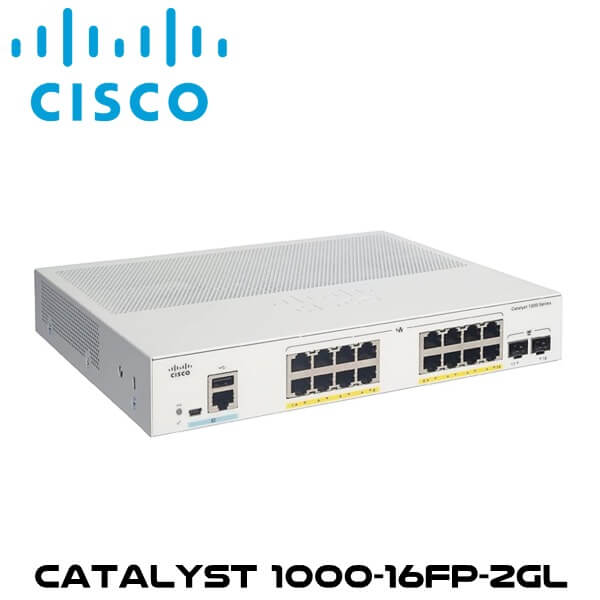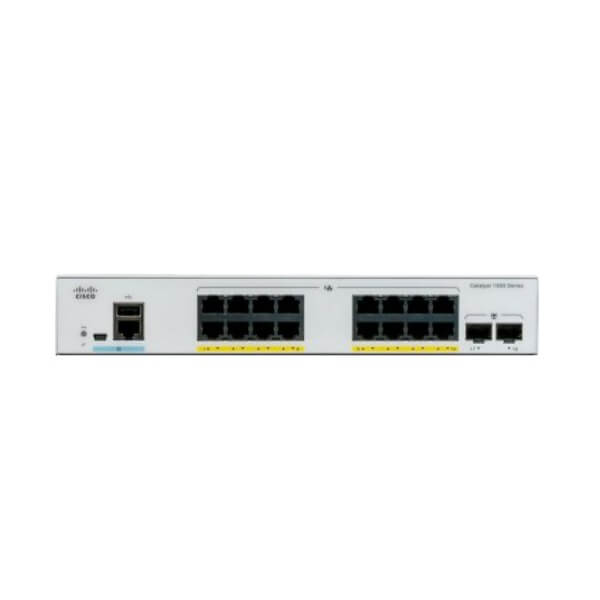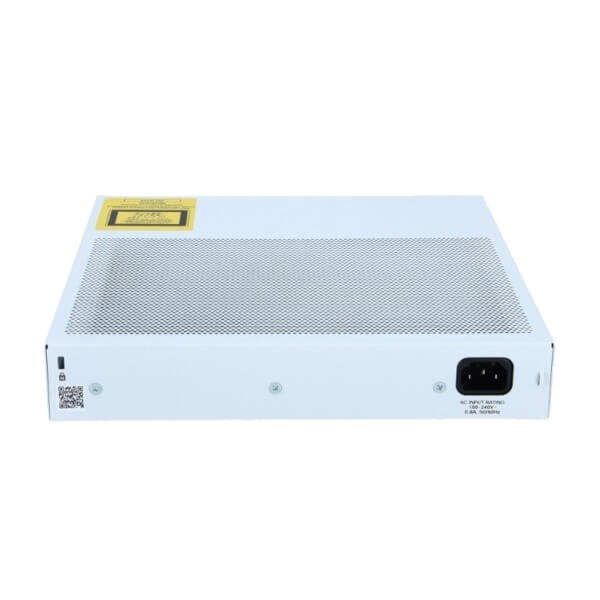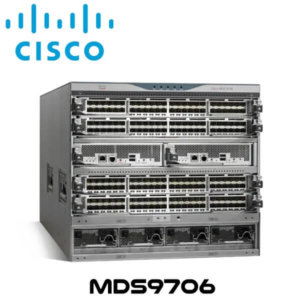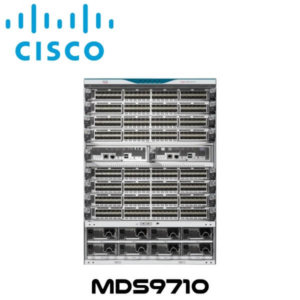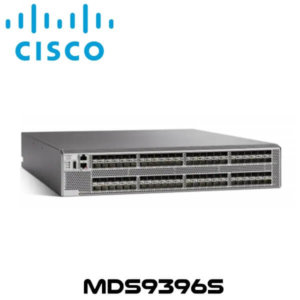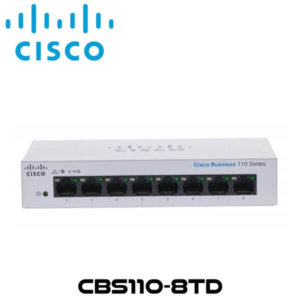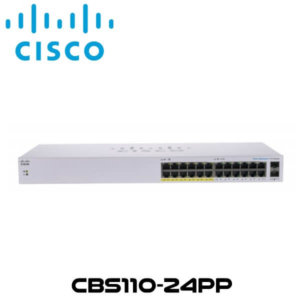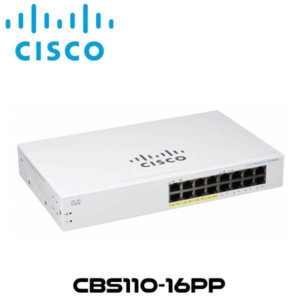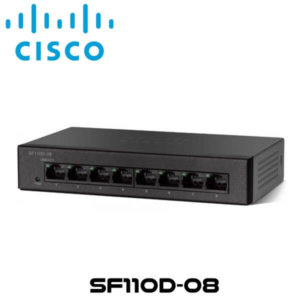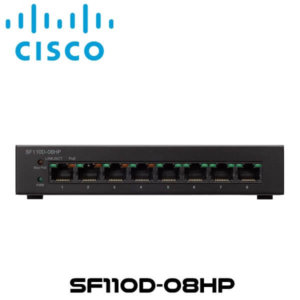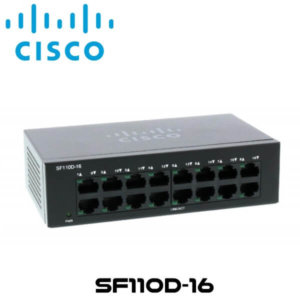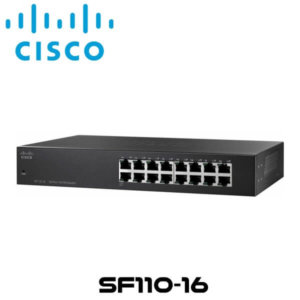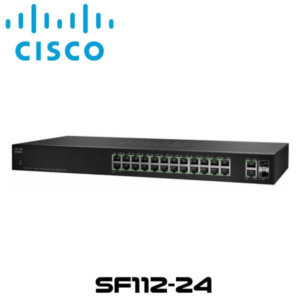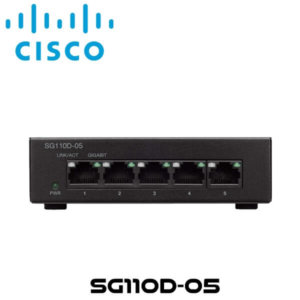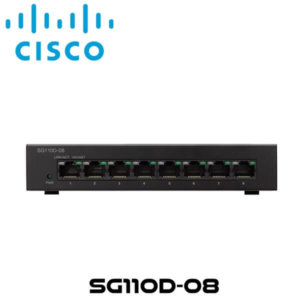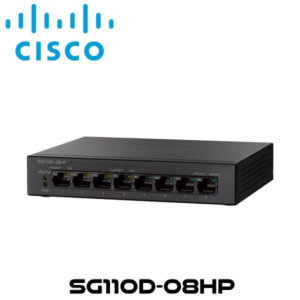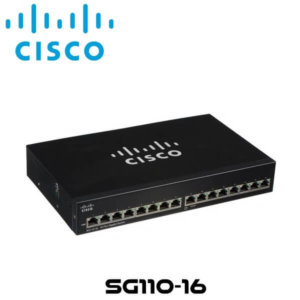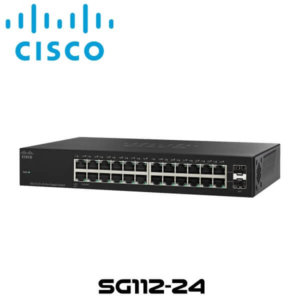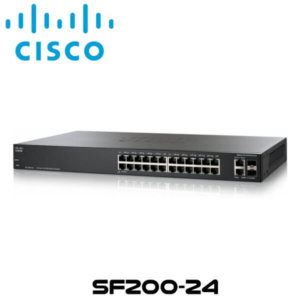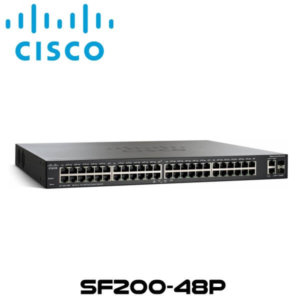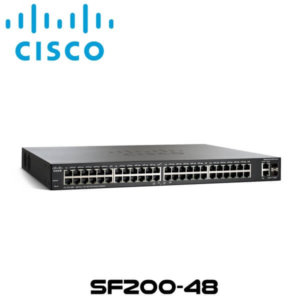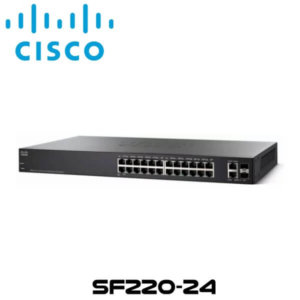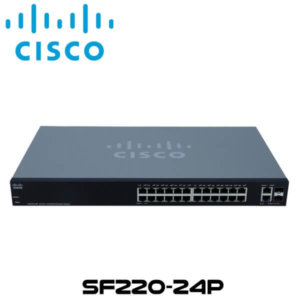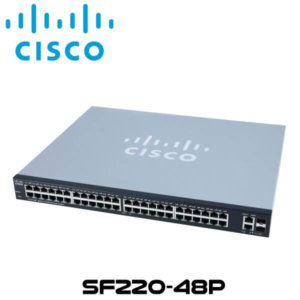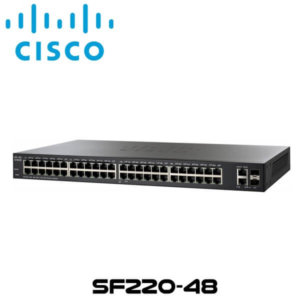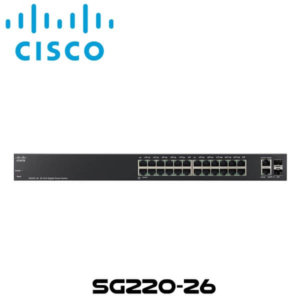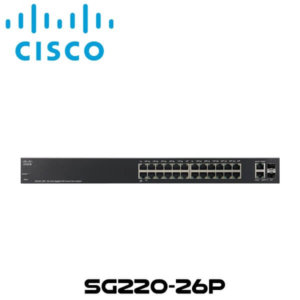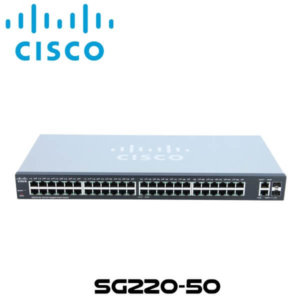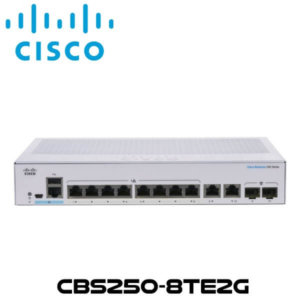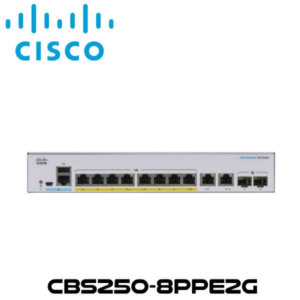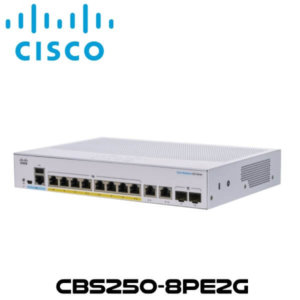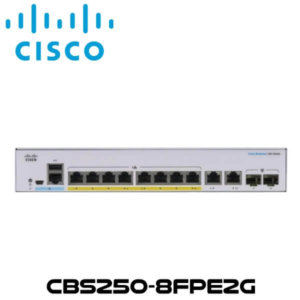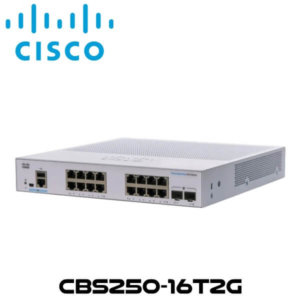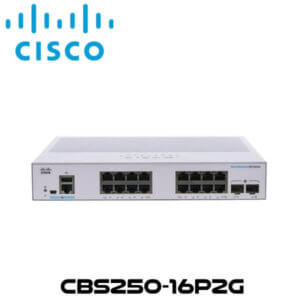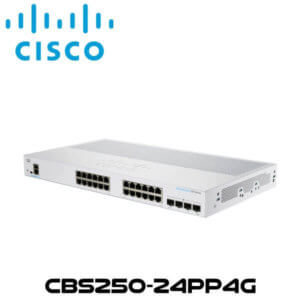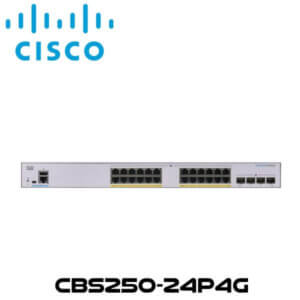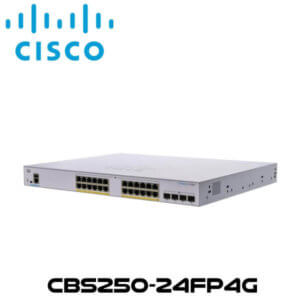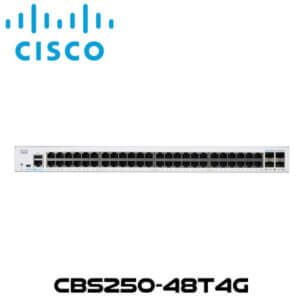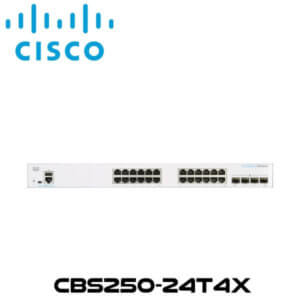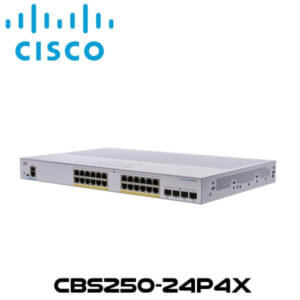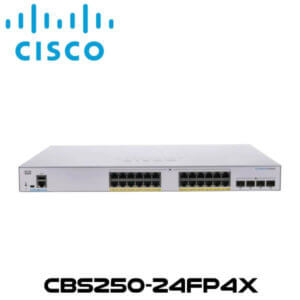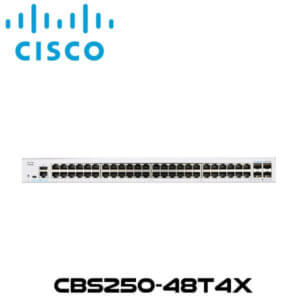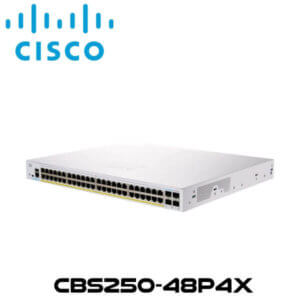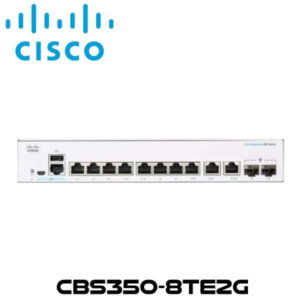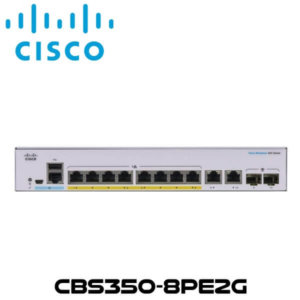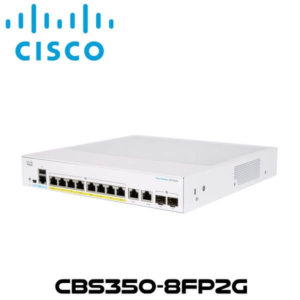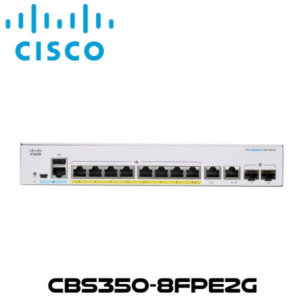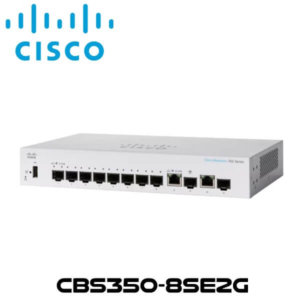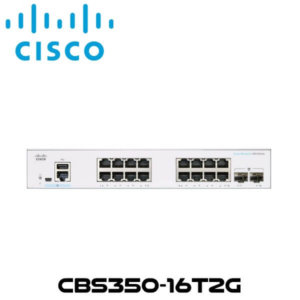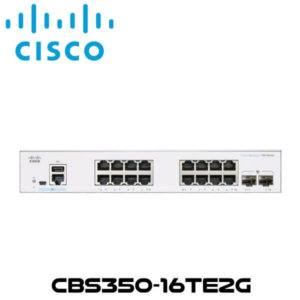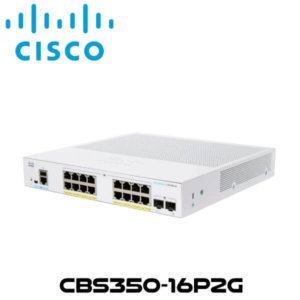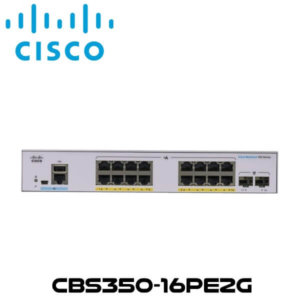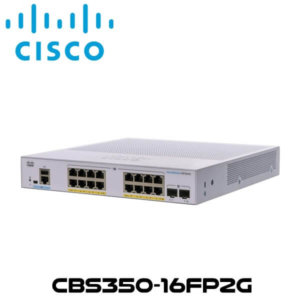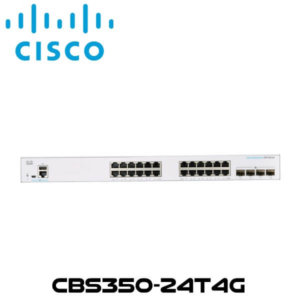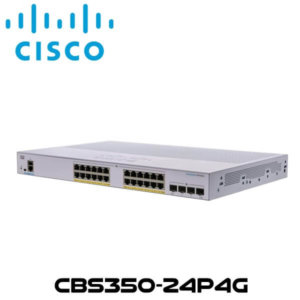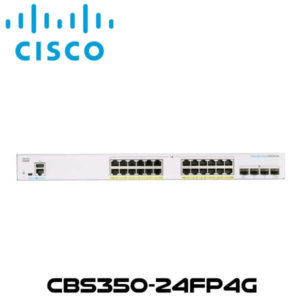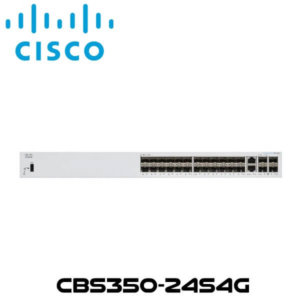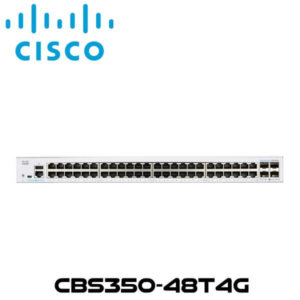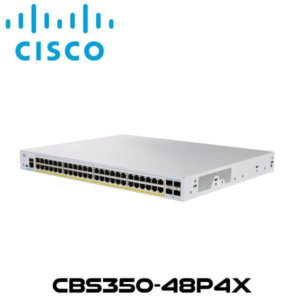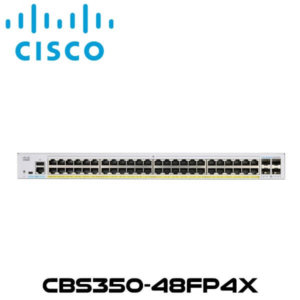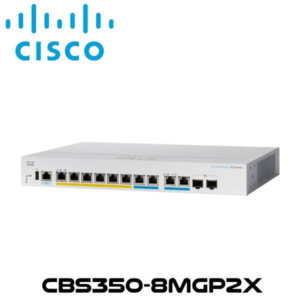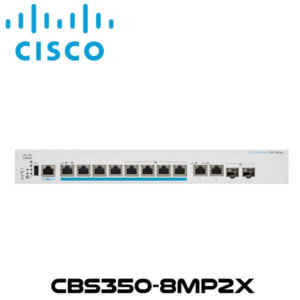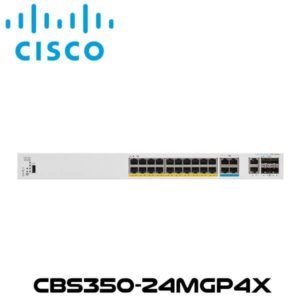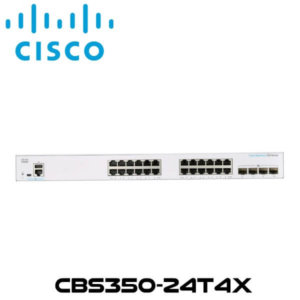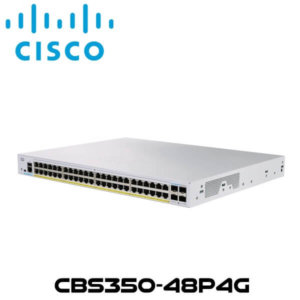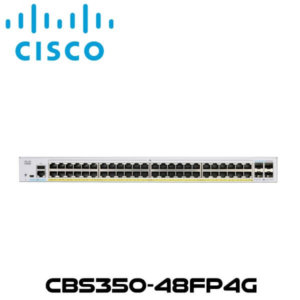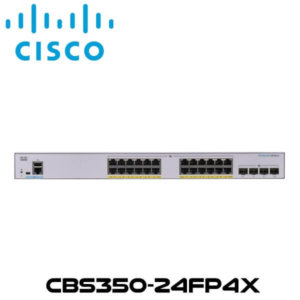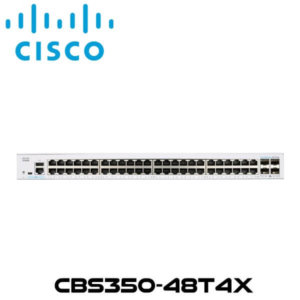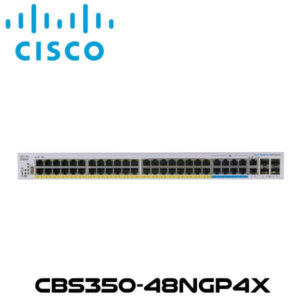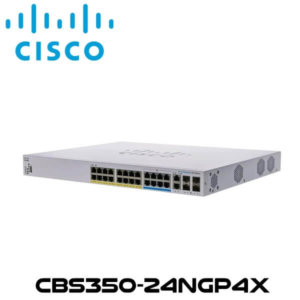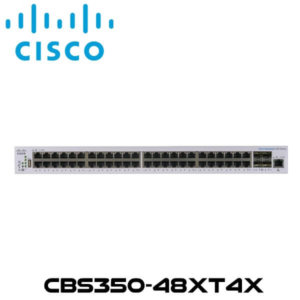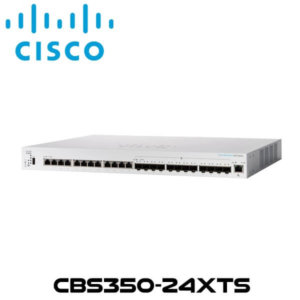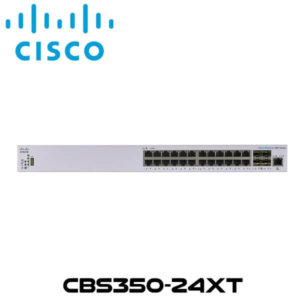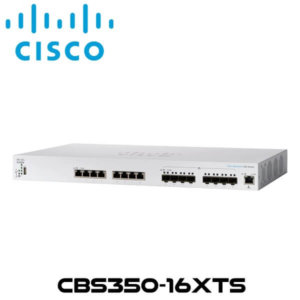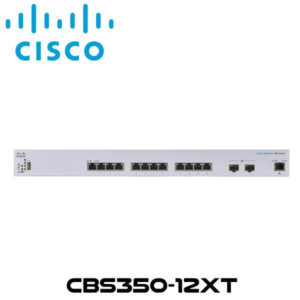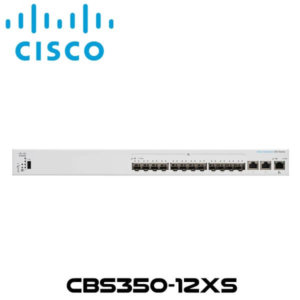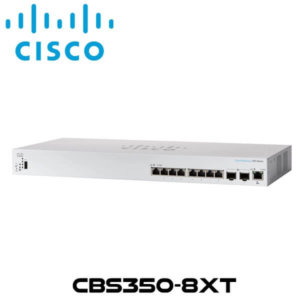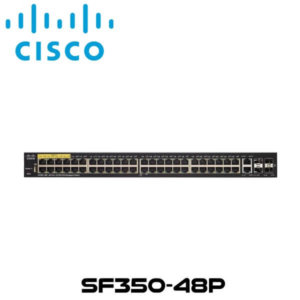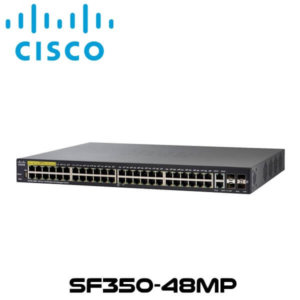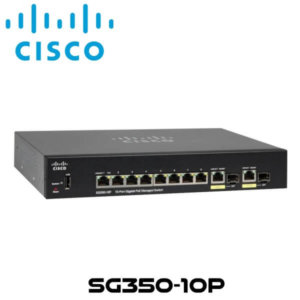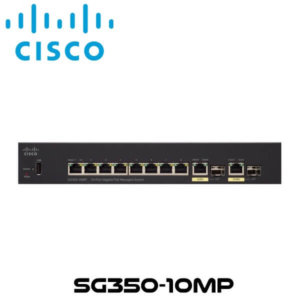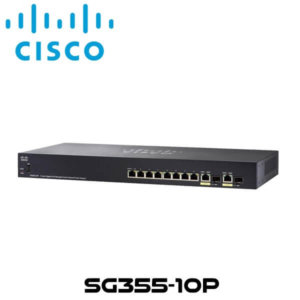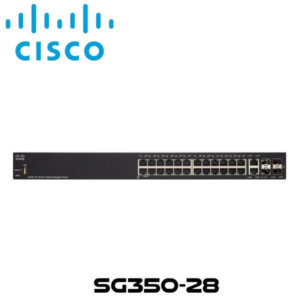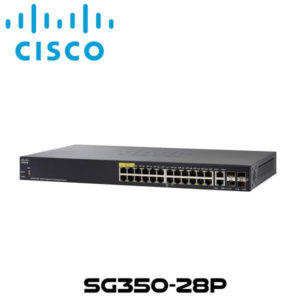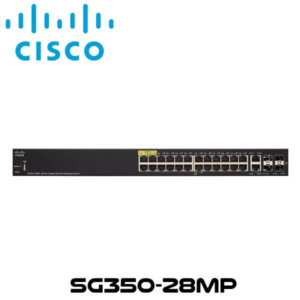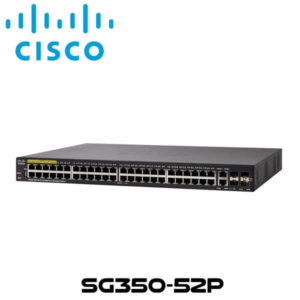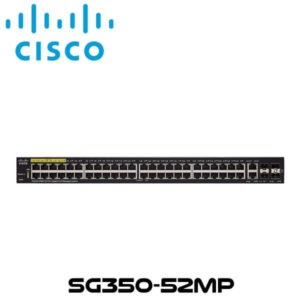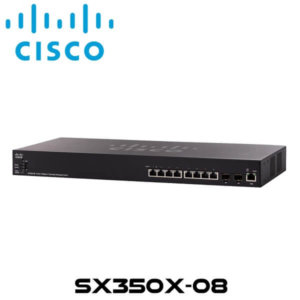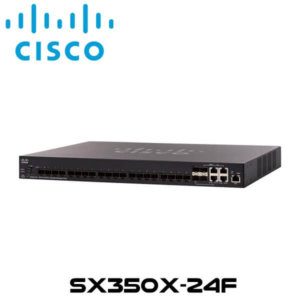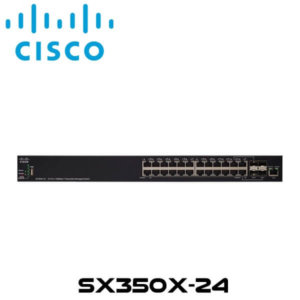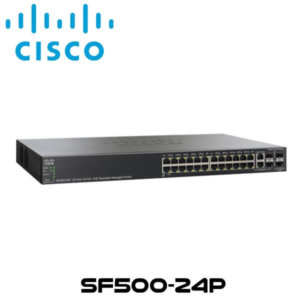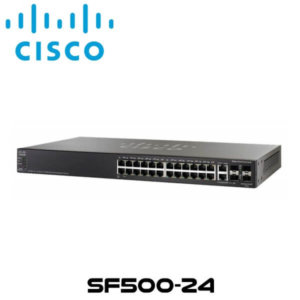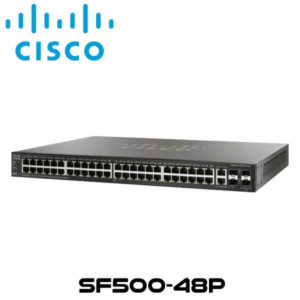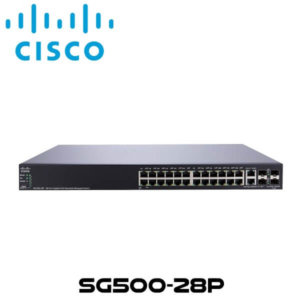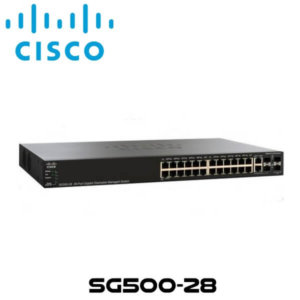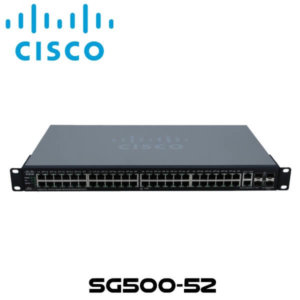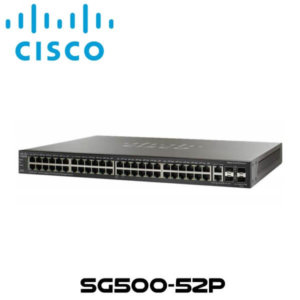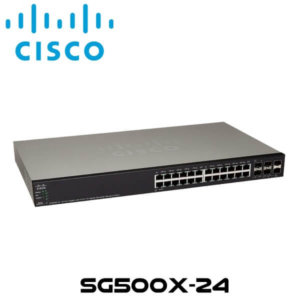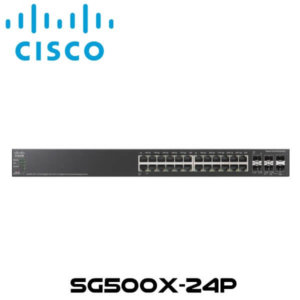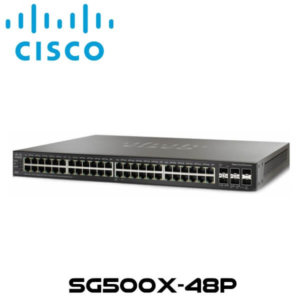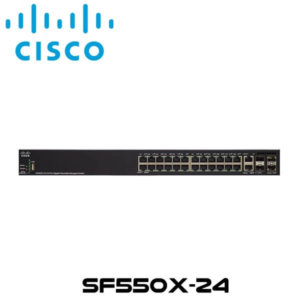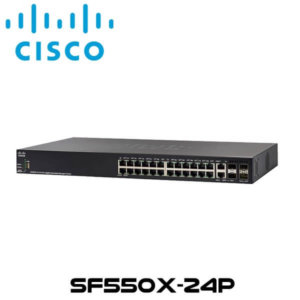Description
Cisco Catalyst1000-16FP2GL Network Switch Ghana
The Cisco Catalyst1000-16FP2GL Ghana Network Switch is an enterprise-class, fixed managed Gigabit Ethernet Layer 2 switch designed for small businesses and branch offices. This simple, flexible, and secure network switch is ideal for critical IoT (Internet of Things) deployments. It operates on Cisco IOS Software and features a CLI (command-line interface) as well as an intuitive web user interface. Cisco Catalyst1000-16FP2GL Ghana operates on Cisco IOS® Software and support simple device management and network management via a Command-Line Interface (CLI) as well as an on-box web UI Cisco Catalyst1000-16FP2GL Ghana delivers enhanced network security, network reliability, and operational efficiency for small organizations.
Features
- 8, 16, 24, or 48 Gigabit Ethernet and 24, 48 port Fast Ethernet data or PoE+ ports with line-rate forwarding
- 2 or 4 fixed 1 Gigabit Ethernet Small Form-Factor Pluggable (SFP)/RJ 45 Combo uplinks (8 Port models only) or 4 fixed 10 Gigabit Ethernet Enhanced SFP (SFP+) uplinks on the Gigabit Ethernet models and 4 fixed 1 Gigabit Ethernet Small Form-Factor Pluggable (SFP) and 2 RJ 45 Combo uplinks on the Fast Ethernet models
- Perpetual PoE+ support with a power budget of up to 740W
- CLI and/or intuitive web UI manageability options
- Network monitoring through sampled flow (sFlow)
- Security with 802.1X support for connected devices, Switched Port Analyzer (SPAN), and Bridge Protocol Data Unit (BPDU) Guard
- Compact fanless models available with a depth of less than 13 inches (33 cm)
- Device management support with over-the-air access via Bluetooth, Simple Network Management Protocol (SNMP), RJ-45, or USB console access
- Reliability with a higher Mean Time Between Failures (MTBF) and an Enhanced Limited Lifetime Warranty support (E-LLW)
Network management
The Cisco Catalyst1000-16FP2GL Ghana switch offers a superior CLI for detailed configuration and administration.
Intelligent PoE+
Cisco Catalyst1000-16FP2GL Ghana switch support both IEEE 802.3af PoE and IEEE 802.3at PoE+ (up to 30W per port) to deliver a lower total cost of ownership for deployments that incorporate Cisco IP phones, Cisco Aironet® and Catalyst wireless access points, or other standards-compliant PoE and PoE+ end devices. PoE removes the need to supply wall power to PoE-enabled devices and eliminates the cost of adding electrical cabling and circuits that would otherwise be necessary in IP phone and WLAN deployments. The PoE power allocation in the Cisco Catalyst1000-16FP2GL Ghana is dynamic, and power mapping scales up to a maximum of 740W of PoE+ power. Intelligent power management allows flexible power allocation across all ports. With Perpetual PoE, the PoE+ power is maintained during a switch reload. This is important for critical endpoints such as medical devices and for IoT endpoints such as PoE-powered lights, so that there is no disruption during a switch reboot.
Network security
Cisco Catalyst1000-16FP2GL Ghana provide a range of security features to limit access to the network and mitigate threats, including:
- Comprehensive 802.1X features to control access to the network, including flexible authentication, 802.1X monitor mode, and RADIUS change of authorization.
- 1X support with Network Edge Access Topology (NEAT), which extends identity authentication to areas outside the wiring closet (such as conference rooms).
- IEEE 802.1X user distribution, which enables you to load-balance users with the same group name across multiple different VLANs.
- Ability to disable per-VLAN MAC learning to allow you to manage the available MAC address table space by controlling which interface or VLANs learn MAC addresses.
- Multi-domain authentication to allow an IP phone and a PC to authenticate on the same switch port while being placed on the appropriate voice and data VLANs.
- Authentication, Authorization, and Accounting (AAA) command authorization in PnP to enable seamless PnP provisioning.
- Access Control Lists (ACLS) for IPv6 and IPv4 security and Quality-of-Service (QoS) ACL elements (ACEs).
- Port-based ACLs for Layer 2 interfaces to allow security policies to be applied on individual switch ports.
- SSH, Kerberos, and SNMP v3 to provide network security by encrypting administrator traffic during Telnet and SNMP sessions. SSH, Kerberos, and the cryptographic version of SNMP v3 require a special cryptographic software image because of U.S. export restrictions.
- SPAN, with bidirectional data support, to allow the Cisco Intrusion Detection System (IDS) to take action when an intruder is detected.
- TACACS+ and RADIUS authentication to facilitate centralized control of the switch and restrict unauthorized users from altering the configuration.
- MAC address notification to notify administrators about users added to or removed from the network.
- MAC Authentication Bypass (MAB) and WebAuth with downloadable ACLs to allow per-user ACLs to be downloaded from the Cisco Identity Services Engine (ISE)as policy enforcement after authentication using MAB or web authentication in addition to IEEE 802.1X.
- Web authentication redirection to enable networks to redirect guest users to the URL they had originally requested.
- Multilevel security on console access to prevent unauthorized users from altering the switch configuration.
- BPDU Guard to shut down Spanning Tree PortFast-enabled interfaces when BPDUs are received, to avoid accidental topology loops.
- IP Source Guard to restrict IP traffic on nonrouted Layer 2 interfaces by filtering traffic based on the Dynamic Host Configuration Protocol (DHCP) snooping binding database or by manually configuring IP source bindings.
- SSH v2 to allow use of digital certificates for authentication between user and server.
- Spanning Tree Root Guard (STRG) to prevent edge devices that are not in the network administrator’s control from becoming Spanning Tree Protocol (STP) root nodes.
- Internet Group Management Protocol (IGMP) filtering to provide multicast authentication by filtering out nonsubscribers and to limit the number of concurrent multicast streams available per port.
- Dynamic VLAN assignment through implementation of VLAN Membership Policy Server client capability to provide flexibility in assigning ports to VLANs. Dynamic VLAN facilitates the fast assignment of IP addresses.
Redundancy and resiliency
Cisco Catalyst1000-16FP2GL Ghana Switch offer a number of redundancy and resiliency features to prevent outages and help ensure that the network remains available:
- IEEE 802.1s/w Rapid Spanning Tree Protocol (RSTP) and Multiple Spanning Tree Protocol (MSTP) provide rapid spanning-tree convergence independent of spanning-tree timers and also offer the benefits of Layer 2 load balancing and distributed processing.
- Per-VLAN Rapid Spanning Tree (PVRST+) allows rapid spanning-tree re-convergence on a per-VLAN spanning-tree basis, without requiring the implementation of spanning-tree instances.
- Switch-port auto-recovery (error disable) automatically attempts to reactivate a link that is disabled because of a network error.
- Link state tracking binds the link state of multiple interfaces. The server Network Interface Cards (NICs) form a group to provide redundancy in the network. When the link is lost on the primary interface, network connectivity is transparently changed to the secondary interface.
Enhanced QoS
Cisco Catalyst1000-16FP2GL Ghana switch offer intelligent traffic management that keeps everything flowing smoothly. Flexible mechanisms for marking, classifying, and scheduling deliver superior performance for data, voice, and video traffic, all at wire speed. Primary QoS features include:
- Up to eight egress queues and two thresholds per port, supporting egress bandwidth control, shaping, and priority queuing so that high-priority packets are serviced ahead of other traffic.
- Ingress policing to allow the analysis of IP service levels for IP applications and services using active traffic monitoring — generating traffic in a continuous, reliable, and predictable manner — for measuring network performance. The number of ingress policers available per port is 64.
- QoS through Differentiated Services Code Point (DSCP) mapping and filtering.
- QoS through traffic classification.
- Trust boundary to configure device-based trust.
- AutoQoS to simplify the deployment of QoS features.
- Shaped Round Robin (SRR) scheduling and Weighted Tail Drop (WTD) congestion avoidance.
- 1p Class of Service (CoS) classification, with marking and reclassification.
Energy management
Cisco Catalyst1000-16FP2GL Ghana offers a range of industry-leading features for energy efficiency and management:
- IEEE 802.3az Energy Efficient Ethernet (EEE) enables ports to dynamically sense idle periods between traffic bursts and quickly switch the interfaces into a low-power idle mode, reducing power consumption.
- Loop detection is a new method to detect network loops in the absence of STP.
- Cisco AutoConfig determines the level of network access provided to an endpoint based on the type of device. This feature also permits hard binding between the end device and the interface.
- Cisco Auto SmartPorts enables automatic configuration of switch ports as devices connect to the switch with settings optimized for the device type, resulting in zero-touch port-policy provisioning.
- Cisco Smart Troubleshooting is an extensive array of diagnostic commands and system health checks in the switch, including Smart Call Home. The Cisco Generic Online Diagnostics (GOLD) and online diagnostics on switches in live networks help predict and detect failures more quickly.
Operational simplicity
- Cisco AutoSecure provides a single-line CLI to enable baseline security features (port security, DHCP snooping, Dynamic Address Resolution Protocol [ARP] Inspection). This feature simplifies security configurations with a single touch.
- DHCP auto configuration of multiple switches through a boot server eases switch deployment.
- Auto negotiation on all ports automatically selects half- or full-duplex transmission mode to optimize bandwidth.
- Dynamic Trunking Protocol (DTP) facilitates dynamic trunk configuration across all switch ports.
- Port Aggregation Protocol (PAgP) automates the creation of Cisco Fast EtherChannel groups or Gigabit EtherChannel groups to link to another switch, router, or server.
- Link Aggregation Control Protocol (LACP) allows the creation of Ethernet channeling with devices that conform to IEEE 802.3ad. This feature is similar to Cisco EtherChannel technology and PAgP.
- Automatic Media-Dependent Interface Crossover (MDIX) automatically adjusts transmit and receive pairs if an incorrect cable type (crossover or straight-through) is installed.
- Unidirectional Link Detection Protocol (UDLD) and Aggressive UDLD allow unidirectional links caused by incorrect fiber-optic wiring or port faults to be detected and disabled on fiber-optic interfaces.
- Local Proxy ARP works in conjunction with Private VLAN Edge to minimize broadcasts and maximize available bandwidth.
- VLAN1 minimization allows VLAN1 to be disabled on any individual VLAN trunk.
- IGMP snooping for IPv4 and IPv6 and Multicast Listener Discovery (MLD) v1 and v2 snooping provide fast client joins and leaves of multicast streams and limit bandwidth-intensive video traffic to only the requesters.
- Per-port broadcast, multicast, and unicast storm control prevents faulty end stations from degrading overall system performance.
- Voice VLAN simplifies telephony installations by keeping voice traffic on a separate VLAN for easier administration and troubleshooting.
- Cisco VLAN Trunking Protocol (VTP) supports dynamic VLANs and dynamic trunk configuration across all switches.
- Layer 2 trace route eases troubleshooting by identifying the physical path that a packet takes from source to destination.
- Trivial File Transfer Protocol (TFTP) reduces the cost of administering software upgrades by downloading from a centralized location.
- Network Time Protocol (NTP) provides an accurate and consistent timestamp to all intranet switches.
Specifications
| Models | 8-port models | 16-port models | 24-port models (1/10G uplinks) | 48-port models (1/10G uplinks) | |||||
| Console ports | |||||||||
| RJ-45 Ethernet | 1 | 1 | 1 | 1 | |||||
| USB mini-B | 1 | 1 | 1 | 1 | |||||
| USB-A port for storage and Bluetooth console | 1 | 1 | 1 | 1 | |||||
| Memory and processor | |||||||||
| CPU | ARM v7 800 MHz | ARM v7 800 MHz | ARM v7 800 MHz | ARM v7 800 MHz | |||||
| DRAM | 512 MB | 512 MB | 512 MB | 512 MB | |||||
| Flash memory | 256 MB | 256 MB | 256 MB | 256 MB | |||||
| Performance | |||||||||
| Forwarding bandwidth | 10 Gbps | 18 Gbps | FE : 6.4 Gbps
1G : 28 Gbps 10G : 64 Gbps |
FE : 8.8 Gbps
1G : 52 Gbps 10G : 88Gpbs |
|||||
| Switching bandwidth | 20 Gbps | 36 Gbps | FE : 12.8 Gbps
1G : 56 Gbps 10G : 128 Gbps |
FE : 17.6 Gbps
1G : 104 Gbps 10G : 176 Gbps |
|||||
| Forwarding rate (64‑byte L3 packets) |
14.88 Mpps | 26.78 Mpps | FE : 9.52 Mpps
1G : 41.67 Mpps 10G : 95.23 Mpps |
FE : 13.09 Mpps
1G : 77.38 Mpps 10G : 130.94 |
|||||
| MAC addresses | 16000 | 16000 | 16000 | 16000 | |||||
| IPv4 unicast direct routes | 542 | 542 | 542 | 542 | |||||
| IPv4 unicast indirect routes | 256 | 256 | 256 | 256 | |||||
| IPv6 unicast direct routes | 414 | 414 | 414 | 414 | |||||
| IPv6 unicast indirect routes | 128 | 128 | 128 | 128 | |||||
| IPv4 multicast routes and IGMP groups | 1024 | 1024 | 1024 | 1024 | |||||
| IPv6 multicast groups | 1024 | 1024 | 1024 | 1024 | |||||
| IPv4/MAC security ACEs | 600 | 600 | 600 (FE : 384) | 600 (FE : 384) | |||||
| IPv6 security ACEs | 600 | 600 | 600 (FE : 256) | 600 (FE : 256) | |||||
| Maximum active VLANs | 256 | 256 | 256 | 256 | |||||
| VLAN IDs available | 4094 | 4094 | 4094 | 4094 | |||||
| Maximum STP instances | 64 | 64 | 64 | 64 | |||||
| Maximum SPAN sessions | 4 | 4 | 4 | 4 | |||||
| MTU-L3 packet | 9198 bytes | 9198 bytes | 9198 bytes | 9198 bytes | |||||
| Jumbo Ethernet frame | 10,240 bytes | 10,240 bytes | 10,240 bytes | 10,240 bytes | |||||
| Dying Gasp | Yes | Yes | Yes (FE : No) | Yes (FE : No) | |||||
| MTBF in hours (data) | 2,171,669 | 2,165,105 | 2,026,793 | 1,452,667 | |||||
| MTBF in hours (PoE) | 1,786,412, 1,706,649 (External PS) | 706,983 | 698,220 | 856,329 | |||||
| MTBF in hours (Full PoE) | 1,706,649 | – | 698,220 | 856,329 | |||||
| Environmental | |||||||||
| Operating temperature | |||||||||
| Sea level | -5 to 50ºC | ||||||||
| Up to 5,000ft (1500 m) | -5 to 45ºC | ||||||||
| Upto 10,000 (3000 m) | -5 to 40ºC | ||||||||
| Operating altitude | 10,000 ft (3,000m) | ||||||||
| Operating relative humidity | 5% to 90% at 40ºC (non-condensing) | ||||||||
| Storage temperature | -13 to 158F (-25 to 70ºC) | ||||||||
| Storage altitude | 15,000 ft (4500m) | ||||||||
| Storage relative humidit | 5% to 95% at 65ºC (non-condensing) | ||||||||
| *Note : |
|
||||||||
| Electrical | Data | Data Ext.PS | Data | Data Ext. PS | Data | FE Data | Data | FE Data | |
| Voltage (auto ranging) | 110 to 220V AC in | 110 to 220V AC in | 110 to 220V AC in | 110 to 220V AC in | |||||
| Frequency | 50 to 60 Hz | 50 to 60 Hz | 50 to 60 Hz | 50 to 60 Hz | |||||
| Current | 0.13A to 0.22A | 0.16A to 0.26A | 0.16A to 0.26A | 0.19A to 0.31A | 0.20A to 0.33A | 0.12A to 0.34A | 0.29A to 0.48A | 0.24A to 0.69A | |
| Power rating (maximum consumption) |
0.04 kVA | 0.017 kVA | 0.05 kVA | 0.05 kVA | 0.06 kVA | 0.02 kVA | 0.09 kVA | 0.035 kVA | |
| Electrical | PoE | PoE Ext. PS | PoE | PoE Ext. PS | PoE | FE PoE | PoE | FE PoE | |
| Voltage (auto ranging) | 110 to 220V AC in | 110 to 220V AC in | 110 to 220V AC in | 110 to 220V AC in | |||||
| Frequency | 50 to 60 Hz | 50 to 60 Hz | 50 to 60 Hz | 50 to 60 Hz | |||||
| Current | 0.22A to 0.27A | 0.22A to 0.37A | 0.24A to 0.28A | 0.14A to 0.24A | 0.37A to 0.64A | 0.23A to 0.35A | 0.37A to 0.64A | 0.26A to 0.46A | |
| Power rating (maximum consumption) |
0.11 kVA | 0.087 kVA | 0.19 kVA | 0.20 kVA | 0.48 kVA | 0.025 kVA | 0.48 kVA | 0.046 kVA | |
| Electrical | Full PoE | Full PoE Ext. PS | Full PoE | Full PoE | Full PoE | ||||
| Voltage (auto ranging) | 110 to 220V AC in | 110 to 220V AC in | 110 to 220V AC in | 110 to 220V AC in | |||||
| Frequency | 50 to 60 Hz | 50 to 60 Hz | 50 to 60 Hz | 50 to 60 Hz | |||||
| Current | 0.23A to 0.28A | 0.15A to 0.2A | 0.35A to 0.37A | 0.29A to 0.48A | 0.45A to 0.94A | ||||
| Power rating (maximum consumption) |
0.15 kVA | 0.15 kVA | 0.45 kVA | 0.8 kVA | 0.95 kVA | ||||
| Power consumption (watts) | Data | Data Ext.PS | Data | Data Ext. PS | Data | FE Data | Data | FE Data | |
| 0% traffic | 14.04 | 13.15 | 14.52 | 14.4 | 1G : 15.84 | 11.22 | 1G : 27.37 | 21.41 | |
| 10G : 18 | 10G : 29.4 | ||||||||
| 10% traffic | 14.06 | 13.76 | 16.44 | 16.44 | 1G : 22.08 | 12.83 | 1G : 41.57 | 23.02 | |
| 10G : 24.48 | 10G : 42.28 | ||||||||
| 100% traffic | 14.26 | 14 | 16.68 | 16.68 | 1G : 22.8 | 17.15 | 1G : 53.66 | 23.03 | |
| 10G : 25.68 | 10G : 54.73 | ||||||||
| Weighted average | 14.12 | 13.64 | 15.88 | 15.84 | 1G : 20.2 | 13.73 | 1G : 40.87 | 22.49 | |
| 10G : 22.7 | 10G : 42.1 | ||||||||
| Power consumption (watts) | PoE | PoE Ext. PS | PoE | PoE Ext. PS | PoE | FE PoE | PoE | FE PoE | |
| 0% traffic | 10.22 | 9.13 | 14.64 | 13.68 | 1G : 15.84 | 14.5 | 1G : 27.9 | 21.62 | |
| 10G : 18 | 10G : 28.0 | ||||||||
| 10% traffic | 12.02 | 15.39 | 16.56 | 15.48 | 1G : 22.44 | 16.1 | 1G : 42.77 | 24.74 | |
| 10G : 24.72 | 10G : 42.73 | ||||||||
| 100% traffic | 12.19 | 15.71 | 16.92 | 16.32 | 1G : 23.16 | 18.58 | 1G : 54.25 | 24.75 | |
| 10G : 25.68 | 10G : 54.49 | ||||||||
| Weighted average | 11.48 | 13.41 | 16.04 | 15.16 | 1G : 20.48 | 16.39 | 1G : 41.64 | 23.70 | |
| 10G : 22.8 | 10G : 41.74 | ||||||||
| Power consumption (watts) | Full PoE | Full PoE Ext. PS | Full PoE | Full PoE | Full PoE | ||||
| 0% traffic | 13.44 | 14.3 | 14.4 | 1G : 18.36 | 1G : 30.61 | ||||
| 10G : 19.68 | 10G : 30.91 | ||||||||
| 10% traffic | 14.4 | 14.9 | 16.68 | 1G : 26.16 | 1G : 45.16 | ||||
| 10G : 26.28 | 10G : 45.78 | ||||||||
| 100% traffic | 14.52 | 15.7 | 16.8 | 1G : 35.4 | 1G : 61.66 | ||||
| 10G : 36 | 10G : 62.26 | ||||||||
| Weighted average | 14.12 | 14.97 | 15.96 | 1G : 26.68 | 1G : 45.81 | ||||
| 10G : 27.32 | 10G : 46.31 | ||||||||
| Acoustic noise (48-port PoE models only) | |||||||||
| Sound pressure (Typical) | C1000-24FP-4G-L, C1000-24FP-4X-L – 34.8 dB | C1000-48T-4G-L, C1000-48T-4X-L – 31.5 dB | |||||||
| C1000-48P-4G-L, C1000-48P-4X-L – 36.1 dB | |||||||||
| C1000-48FP-4G-L
C1000-48FP-4X-L – 47.6dB |
|||||||||
| Note : Bystander positions operating mode at 77°F (25°C) ambient; All other models are fanless for silent operations | |||||||||
| Safety and compliance | |||||||||
| Safety | UL 60950-1 Second Edition, CAN/CSA-C22.2 No. 60950-1 Second Edition, EN 60950-1 Second Edition, IEC 60950-1 Second Edition, AS/NZS 60950-1, IEC 62368-1, UL 62368-1
GB 4943.1-2011 |
||||||||
| EMC : Emissions | 47CFR Part 15 Class A, AS/NZS CISPR32 Class A, CISPR32 Class A, EN55032 Class A, ICES-003 Class A, VCCI-CISPR32 Class A, EN61000-3-2, EN61000-3-3, KN32 Class A, CNS13438 Class A | ||||||||
| EMC : Immunity | EN55024 (including EN 61000-4-5), EN300386, KN35 | ||||||||
| Environmental | Reduction of Hazardous Substances (RoHS) including Directive 2011/65/EU | ||||||||
| Telco | Common Language Equipment Identifier (CLEI) code | ||||||||
| U.S. government certifications | USGv6 and IPv6 Ready Logo | ||||||||
| Connectors and interfaces | |||||||||
| Ethernet interfaces | 10BASE-T ports : RJ-45 connectors, 2-pair Category 3, 4, or 5 Unshielded Twisted Pair (UTP) cabling | ||||||||
| 100BASE-TX ports : RJ-45 connectors, 2-pair Category 5 UTP cabling | |||||||||
| 1000BASE-T ports : RJ-45 connectors, 4-pair Category 5 UTP cabling | |||||||||
| 1000BASE-T SFP-based ports : RJ-45 connectors, 4-pair Category 5 UTP cabling | |||||||||
| Indicator LEDs | Per-port status : link integrity, disabled, activity | ||||||||
| System status : System | |||||||||
| Console cables | CAB-CONSOLE-RJ45 Console cable 6 ft. with RJ-45 | ||||||||
| CAB-CONSOLE-USB Console cable 6 ft. with USB Type A and mini-B connectors | |||||||||
| Power |
|
||||||||
| Management | |||||||||
| BRIDGE-MIB
CISCO-CABLE-DIAG-MIB CISCO-CDP-MIB CISCO-CLUSTER-MIB CISCO-CONFIG-COPY-MIB CISCO-CONFIG-MAN-MIB CISCO-DHCP-SNOOPING-MIB CISCO-ENTITY-VENDORTYPE-OID-MIB CISCO-ENVMON-MIB CISCO-ERR-DISABLE-MIB CISCO-FLASH-MIB CISCO-FTP-CLIENT-MIB CISCO-IGMP-FILTER-MIB CISCO-IMAGE-MIB CISCO-IP-STAT-MIB CISCO-LAG-MIB CISCO-MAC-NOTIFICATION-MIB CISCO-MEMORY-POOL-MIB CISCO-PAGP-MIB CISCO-POE-EXTENSIONS-MIB |
CISCO-PORT-QOS-MIB
CISCO-PORT-SECURITY-MIB CISCO-PORT-STORM-CONTROL-MIB CISCO-PRODUCTS-MIB CISCO-PROCESS-MIB CISCO-RTTMON-MIB CISCO-SMI-MIB CISCO-STP-EXTENSIONS-MIB CISCO-SYSLOG-MIB CISCO-TC-MIB CICSO-TCP-MIB CISCO-UDLDP-MIB CISCO-VLAN-IFTABLE CISCO-VLAN-MEMBERSHIP-MIB CISCO-VTP-MIB ENTITY-MIB ETHERLIKE-MIB IEEE8021-PAE-MIB IEEE8023-LAG-MIB |
IF-MIB
INET-ADDRESS-MIB OLD-CISCO-CHASSIS-MIB OLD-CISCO-FLASH-MIB OLD-CISCO-INTERFACES-MIB OLD-CISCO-IP-MIB OLD-CISCO-SYS-MIB OLD-CISCO-TCP-MIB OLD-CISCO-TS-MIB RFC1213-MIB RMON-MIB RMON2-MIB SNMP-FRAMEWORK-MIB SNMP-MPD-MIB SNMP-NOTIFICATION-MIB SNMP-TARGET-MIB SNMPv2-MIB TCP-MIB UDP-MIB |
|||||||
| Standards | |||||||||
| IEEE 802.1D STP
IEEE 802.1p CoS Prioritization IEEE 802.1Q VLAN IEEE 802.1s IEEE 802.1w IEEE 802.1X IEEE 802.1ab LLDP Bluetooth v4.0 |
IEEE 802.3ad
IEEE 802.3af and IEEE 802.3at IEEE 802.3ah (100BASE-X single/multimode fiber only) IEEE 802.3x full duplex on 10BASE-T, 100BASE-TX, and 1000BASE-T ports IEEE 802.3 10BASE-T IEEE 802.3u 100BASE-TX |
IEEE 802.3ab 1000BASE-T
IEEE 802.3z 1000BASE-X RMON I and II standards SNMP v1, v2c, and v3 IEEE 802.3az IEEE 802.3ae 10 Gigabit Ethernet IEEE 802.1ax |
|||||||
| RFC compliance | |||||||||
| RFC 768 – UDP
RFC 783 – TFTP RFC 791 – IP RFC 792 – ICMP RFC 793 – TCP RFC 826 – ARP RFC 854 – Telnet RFC 951 – Bootstrap Protocol (BOOTP) RFC 959 – FTP RFC 1112 – IP Multicast and IGMP RFC 1157 – SNMP v1 RFC 1166 – IP Addresses |
RFC 1256 – ICMP Router Discovery
RFC 1305 – NTP RFC 1492 – TACACS+ RFC 1493 – Bridge MIB RFC 1542 – BOOTP extensions RFC 1901 – SNMP v2C RFC 1902-1907 – SNMP v2 RFC 1981 – Maximum Transmission Unit (MTU) Path Discovery IPv6 FRC 2068 – HTTP RFC 2131 – DHCP RFC 2138 – RADIUS RFC 2233 – IF MIB v3 |
||||||||


